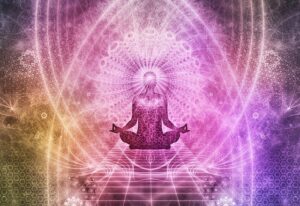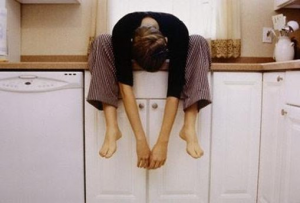Burnout aparece nas situações mais inusitadas, quando, por exemplo, você está pronta para ir trabalhar, de roupa e tudo, mas não consegue sair da cama. Ou simplesmente está trabalhando normalmente e de repente deu um branco geral na sua mente bem naquele momento crucial de apresentar um relatório importante na reunião de diretoria.
Sintomas como esse são relatados pelas pessoas acometidas pelo Burnout, síndrome que foi reconhecida como doença ocupacional pela Organização Mundial da Saúde (OMS) em 2022 e que consta como código CID 11.
Burnout: o que é
Burnout é uma expressão em inglês que pode se traduzir como “apagamento”, quando a pessoa não consegue mais dar conta de suas funções rotineiras.
Também conhecida como Síndrome do Esgotamento Profissional, é uma síndrome resultante do stress crônico no local de trabalho que não foi gerenciado com sucesso. É caracterizada pelo estado de exaustão extrema, resultante do acúmulo excessivo de trabalho (tarefas, exigências e responsabilidades), distanciamento mental do próprio trabalho e redução da eficácia profissional.
Sinais de que você pode estar com Burnout
Algumas características são mais comuns e são indícios de que você pode estar com Burnout:
- Cansaço constante com dores musculares, dor de cabeça, taquicardia, sudorese, falta de ar;
- Dificuldade para dormir e não conseguir se desligar;
- Falta de apetite;
- Dificuldade de concentração;
- Sensação de esgotamento físico ou emocional;
- Desmotivação intensa em relação às atividades do trabalho e ao próprio fato de trabalhar;
- Vontade de faltar ou evitar atividades relacionadas ao trabalho;
- Lapsos de memória;
- Irritação e agressividade e/ou mudanças bruscas de humor;
- Ansiedade;
- Depressão;
- Pessimismo;
- Sensação de falta de sentido;
- Sensação de sobrecarga (trabalha demais e nunca consegue acabar).
Causas do Burnout
Além do que o corpo manifesta sob a forma de desequilíbrios físicos, é preciso identificar as causas do Burnout. Que muitas vezes, estão relacionadas a pessoas com perfis de exigência máxima sobre si, perfeccionistas, que se entregam em excesso ao trabalho e já não sabem identificar a linha entre trabalho e lazer.
As principais causas do Burnout são:
- Não respeitar horários de entrada e saída do trabalho;
- Isolamento e falta de integração entre os membros da equipe;
- Prazos de entrega que não são factíveis;
- Chefes abusivos;
- Aumento da carga de trabalho sem recompensas claras;
- Insegurança quanto à estabilidade no emprego;
- Falta de clareza sobre os objetivos da equipe e empresa.
Burnout: tratamento com Terapias Integrativas
Paralelamente ao cuidado médico especializado, as Terapias Integrativas podem ajudar e complementar o tratamento de diversas maneiras.
A terapeuta da Consonare, Fabíola Bosio, que atua com Florais de Bach, Florais de Saint Germain, Reiki e Cromoterapia, aponta que as Terapias Integrativas podem ajudar a melhorar o quadro de esgotamento mental.
“Os sistemas Florais de Bach e Saint Germain atuam tanto nos efeitos físicos e mentais que o Burnout causa como auxilia na prevenção. As essências florais acalmam a mente e o coração, liberando a ansiedade. Trazem também paciência, flexibilidade e tolerância para aceitar e suportar situações de grande pressão para que nesses momentos de pressão, você gerencie seu ambiente interno e possa dar o melhor de si sem se esgotar”, relata.
Florais trazem a energia da alegria para vencer obstáculos
Além disso, ela também aponta que as essências florais auxiliam no fechamento do campo bioenergético para que a pessoa não sofra influências negativas do meio, trazendo a energia da alegria para vencer obstáculos e também ter pleno controle das emoções e dos sentimentos negativos.
“Os Florais combatem a baixa autoestima causada por excesso de tarefas, onde essa situação gera um estado de confusão e desordem interna, bem como desperta seus talentos e te conecta com seus valores mais profundos”, afirma a terapeuta Fabíola Bosio.
Reiki desobstrui os “nós energéticos”
Já o Reiki busca fortalecer os locais onde se encontram bloqueios, os “nós energéticos”, eliminando as toxinas, equilibrando o pleno funcionamento celular e restabelecendo o fluxo de energia vital. “Essa terapia é uma excelente aliada para o tratamento da síndrome de burnout, devido à sensação de relaxamento e bem-estar que proporciona”, assinala a terapeuta reikiana.
Confira outros benefícios do Reiki:
- Diminui sintomas de estresse e ansiedade;
- Libera serotonina (hormônio da felicidade ) e endorfina (estimula se sensação de bem-estar, conforto, melhora o estado de humor e alegria);
- Traz a sensação de calma e harmonia;
- Redução nas dores;
- Aumenta a concentração;
- Reduz a pressão arterial;
- Alivia os sintomas da insônia e melhora a qualidade de vida.
A Cromoterapia é outra terapia integrativa que pode ajudar no tratamento de Burnout. Por meio do uso terapêutico das cores aplicadas no corpo com auxílio de uma lâmpada, é possível auxiliar a resgatar a alegria e felicidade.
Cromoterapia tem propriedades calmantes e tranquilizantes
“Para tratamento das questões físicas do Burnout, a Cromoterapia tem propriedades calmantes e tranquilizantes, que atuam no sistema nervoso e em todo o sistema muscular, aliviando dores, trazendo calma e tranquilidade, aumentando a energia vital, estabilizando o humor, auxiliando a ter um sono mais tranquilo, entre outros benefícios”, enumera a terapeuta Fabíola Bosio.
Você está passando por muito estresse no seu trabalho? Se dedica e não se vê reconhecido? Está com dificuldades de aliar a profissão às demais demandas da sua vida?
Agende uma sessão com a terapeuta Fabíola Bosio pela plataforma Consonare.
Burnout: what it is, causes and treatment
Burnout manifests itself in the most unexpected situations, such as when you are ready to go to work, dressed and all, but find yourself unable to get out of bed. Or when you are working normally, and suddenly your mind goes blank right at that crucial moment of presenting an important report during a board meeting.
Symptoms like these are reported by individuals affected by burnout, a syndrome that was officially recognized as an occupational disease by the World Health Organization (WHO) in 2022 and is listed under the ICD-11 code.
Burnout appears in the most unusual situations, when, for example, you are ready to go to work, with your clothes on and everything, but you can’t get out of bed. Or you are simply working normally and suddenly your mind goes blank right at that crucial moment of presenting an important report at the board meeting.
Symptoms like this are reported by people affected by Burnout, a syndrome that was recognized as an occupational disease by the World Health Organization (WHO) in 2022 and which is listed as ICD code 11.
Burnout: What is it?
Burnout is an expression in English that means “blackout,” when a person is no longer able to perform their routine functions.
Also known as Professional Burnout Syndrome, it is a condition resulting from chronic workplace stress that has not been successfully managed. It is characterized by a state of extreme exhaustion, resulting from the excessive accumulation of work (tasks, demands and responsibilities), mental distancing from the work itself and reduced professional effectiveness.
Symptoms that you may have Burnout
Some common characteristics serve as signs that you may be experiencing Burnout:
Constant tiredness with muscle pain, headaches, tachycardia, sweating, and shortness of breath.
Difficulty sleeping (insomnia) and an inability to switch off.
Lack of appetite.
Difficulty concentrating.
Feeling of physical or emotional exhaustion.
Intense lack of motivation regarding work activities and the act of working itself.
Desire to skip or avoid work-related activities.
Memory lapses.
Irritability, aggressiveness or sudden mood changes.
Anxiety.
Depression.
Pessimism.
Feeling of meaninglessness.
Feeling of overload (working too much and never being able to finish).
Burnout Causes
In addition to what the body manifests in the form of physical imbalances, it is necessary to identify the burnout causes. Often, these causes are related to individuals with maximum self-demanding profiles, perfectionists who overcommit to work and can no longer distinguish the boundary between work and leisure.
The main burnout causes include:
Disregarding work entry and exit times.
Isolation and lack of integration among team members.
Unrealistic deadlines.
Abusive supervisors.
Increased workload without clear rewards.
Job stability concerns.
Lack of clarity regarding team and company objectives.
Burnout: Treatment with Integrative Therapies
In addition to specialized medical care, Integrative Therapies can aid and complement the treatment in various ways. Fabíola Bosio, a therapist at Consonare, specializing in Bach and Saint Germain Flower Essences, Reiki, and Chromotherapy, suggests that Integrative Therapies can help improve the mental exhaustion scenario.
“The Bach and Saint Germain Flower Essence systems act on both the physical and mental effects that Burnout causes, serving as a preventive measure. Floral essences calm the mind and heart, alleviating anxiety. They also bring patience, flexibility, and tolerance to accept and endure high-pressure situations so that in these moments, you can manage your internal environment and give your best without burning out,” she explains.
Flower Essences Bring the Energy of Joy to Overcome Obstacles
Furthermore, she notes that floral essences also assist in closing the bioenergetic field so that the person is not negatively influenced by the environment, bringing the energy of joy to overcome obstacles and have full control over emotions and negative feelings.
“Flower essences combat low self-esteem caused by an excess of tasks, where this situation generates a state of confusion and internal disorder, as well as awakening your talents and connecting you with your deepest values,” says therapist Fabíola Bosio.
Reiki Clears Energetic “Knots”
Reiki, on the other hand, seeks to strengthen areas with blockages, the “energetic knots,” eliminating toxins, balancing cellular functions, and restoring the flow of vital energy. “This therapy is an excellent ally in the treatment of burnout syndrome due to the relaxation and well-being it provides,” notes the Reiki therapist.
Here are some other benefits of Reiki:
Reduces symptoms of stress and anxiety.
Releases serotonin (happiness hormone) and endorphins (stimulates feelings of well-being, comfort, improves mood, and joy).
Brings a sense of calm and harmony.
Reduction in pain.
Increases concentration.
Lowers blood pressure.
Relieves insomnia symptoms and improves the quality of life.
Chromotherapy for Burnout Treatment
Chromotherapy is another integrative therapy that can help in the treatment of Burnout. Through the therapeutic use of colors applied to the body with the help of a lamp, it is possible to assist in reclaiming joy and happiness.
Chromotherapy has Calming and Soothing Properties
“For addressing the physical aspects of Burnout, Chromotherapy has calming and soothing properties that act on the nervous system and the entire muscular system. It alleviates pain, brings calm and tranquility, increases vital energy, stabilizes mood, aids in having a more peaceful sleep, among other benefits,” said therapist Fabíola Bosio.
Are you experiencing a lot of stress in your job? Are you dedicated but not feeling recognized? Are you struggling to balance your profession with other demands in your life?
Schedule a session with therapist Fabíola Bosio through the Consonare platform.












